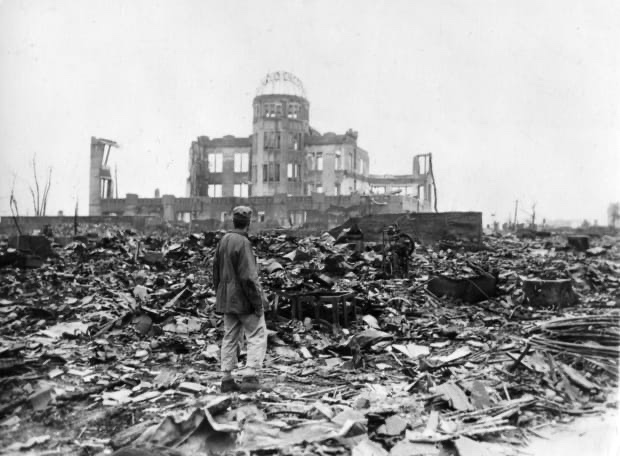Madeleine K. Albright
The nuclear age dawned on 16 July 1945—75 years ago this month—when the U.S. military detonated an atomic weapon deep in the New Mexican desert. In his diary 1 week later, President Harry Truman wrote: “We have discovered the most terrible bomb in the history of the world. It may be the fire destruction prophesied in the Euphrates Valley Era, after Noah and his fabulous Ark.” The world would soon witness, in Hiroshima and Nagasaki, the unprecedented devastation these new instruments of war could cause. Almost immediately, a global effort began to keep them under control. This effort was, until recently, led by the United States. Now that early progress is in jeopardy, and the world risks heading down a dark and dangerous path toward what experts bloodlessly call a “nuclear exchange.”
President Truman issued the first international nonproliferation proposal on 15 November 1945, when he joined with the leaders of the United Kingdom and Canada in calling for the elimination of atomic weapons and the peaceful uses of nuclear energy. Eight years later, President Dwight Eisenhower echoed this call in his “Atoms for Peace” speech. President John F. Kennedy stressed similar themes in his push to ban atmospheric nuclear tests.
Foremost among preventive measures, however, was the 1970 Nuclear Nonproliferation Treaty, negotiated by President Lyndon Johnson, ratified by President Richard Nixon, and eventually signed by every country except Israel, India, and Pakistan. This agreement was based on a grand bargain: that the nuclear haves (United States, USSR, United Kingdom, France, and China) would eliminate these weapons over time, while everyone else pledged not to build or acquire them. For more than a quarter century, the pact held. Dozens of countries that could have developed nuclear arms refrained from doing so.
But with memories of Hiroshima and Nagasaki fading, countries—including the United States—have begun to reconsider the logic of nonproliferation. When I was Secretary of State in the late 1990s, India and Pakistan crashed into the nuclear club. In the years that followed, North Korea forged ahead with its own program despite international disapproval. Iran agreed in 2015 to strict limits in exchange for sanctions relief, only to see the United States withdraw from the deal in 2018. Tehran has since resumed uranium enrichment.
A breakdown in efforts by the United States and Russia has further set back the cause. The U.S. withdrawal from the Anti-Ballistic Missile Treaty in 2002 began a trend away from negotiated arms reduction and toward unilateral moves. With the dissolution of the Intermediate-Range Nuclear Forces Treaty last year, only one agreement remains in place limiting the size of American and Russian nuclear forces—and that treaty, known as New START (Strategic Arms Reduction Treaty), is set to expire next year.
Against that backdrop, both the United States and Russia are placing a renewed emphasis on the role of nuclear weapons in their military strategies, with the United States deploying new types of bombs following a wholesale modernization effort by the Russian military. Some officials are even embracing the folly that a nuclear war can be won.
Late last year, as part of the Aspen Ministers Forum, I met in Vienna with other former foreign ministers from more than a dozen countries. I came away deeply troubled by the possible worldwide consequences of an accelerating global arms race and the degradation of agreements on arms reduction and nonproliferation.
For the world to change course, the United States must restore its position as a supporter of negotiated disarmament and an architect of peace. The United States does not need every weapon in its nuclear arsenal. Nor does it have the money to pay for them without detracting from more urgent priorities. The estimated cost of modernizing the nuclear enterprise—about $50 billion per year—is almost five times the budget of the U.S. Centers for Disease Control and Prevention.
A new U.S. administration can reduce such spending, supporting instead the goal of nuclear disarmament. U.S. leaders may not know how to arrive at this final destination, but there are obvious first few steps—extending current treaties, pursuing follow-on agreements, and using the full range of diplomatic tools to avoid conflict and escalation. Seventy-five years into the nuclear age, the United States must get off its current path and once again lead toward a nuclear weapons–free world.
No comments:
Post a Comment